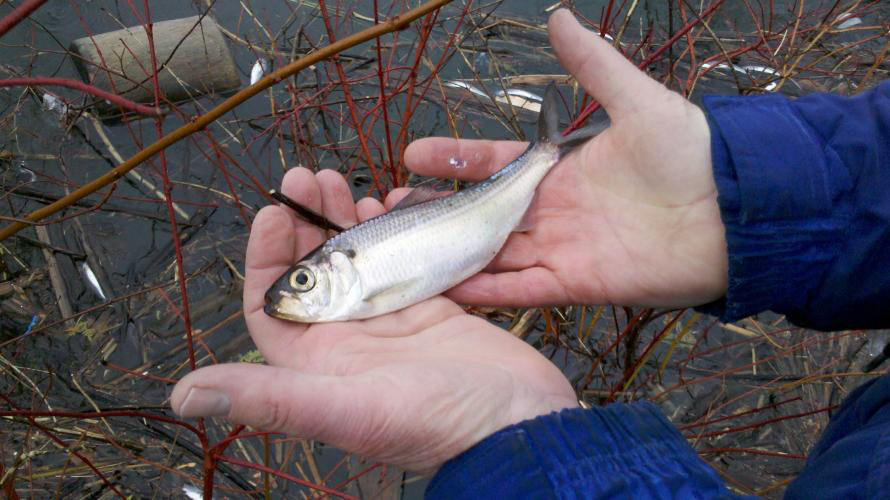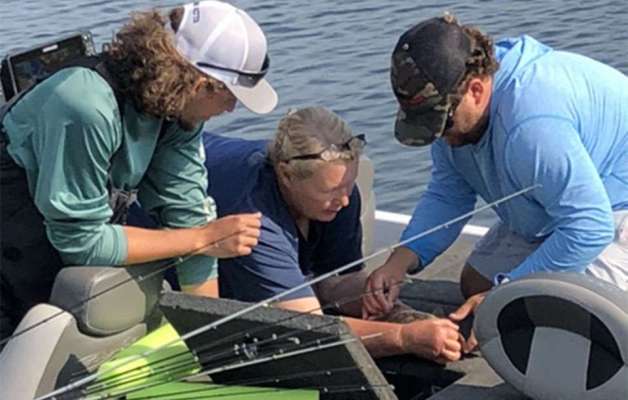
We’ve heard anglers talk this week about bass eating a bait fish called an alewife. On Bassmaster LIVE Chris Zaldain showed us some that bass had spit up in his boat. I knew a little bit about alewives from reading a book about the Great Lakes, where alewives have spread quickly and pushed out some native species. I wanted to learn more about how they got into Lake Champlain.
Here’s a summary of what the Vermont Fish and Wildlife Dept. had to say.
In their native range alewives are considered a saltwater fish that swim up freshwater rivers and streams to spawn. They are thought of by many as an invasive species when they set up camp in freshwater fisheries.
Once alewives get into a freshwater lake, they can complete their entire life cycle there. At Lake Champlain alewives are found in deep, open waters except during spawning season when they move to shallower waters.
How exactly the alewife got in Lake Champlain is unknown, although they may have entered through the Hudson or Richelieu rivers. The alewives in nearby Lake St. Catherine were most likely established from a bait bucket release.
Alewives get big. Adults are typically 5-8 inches long, though they can reach 11-12 inches in Lake Champlain.
Alewives are prolific and the population can increase quickly when introduced to new waters. They feed primarily on plankton, a major food source for native fish species. Alewives’ voracious feeding habits allow them to outcompete native fish.
Here’s what B.A.S.S. conservation director Gene Gilliland had to say about alewife: they are a good food source for bass and other predatory fish. But they also mess up the natural order of species that live in a lake. That’s why New York and Vermont have rules against transporting fish and bait from one body of water to another.
“There are unintended consequences,” said Gilliland.



